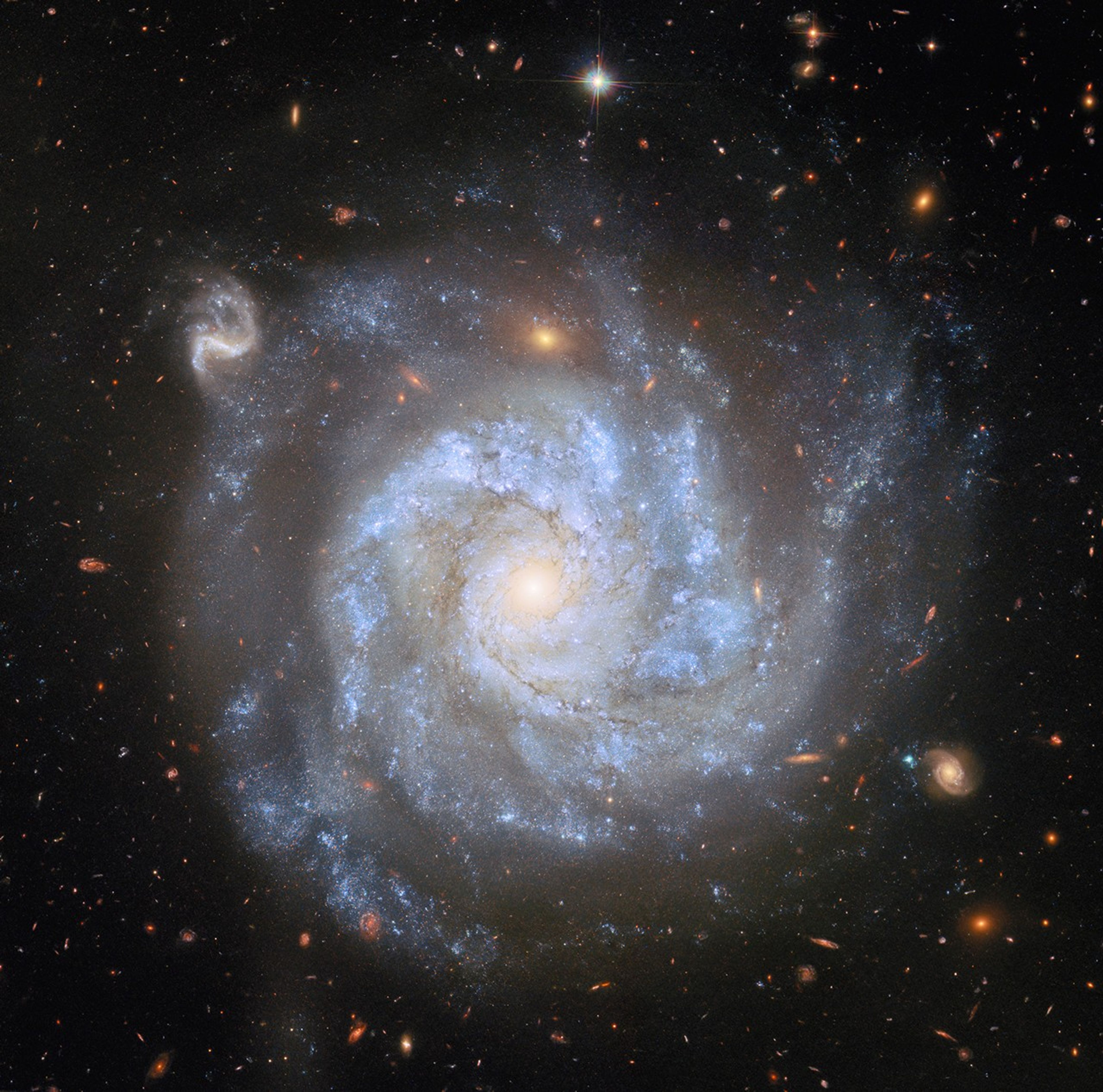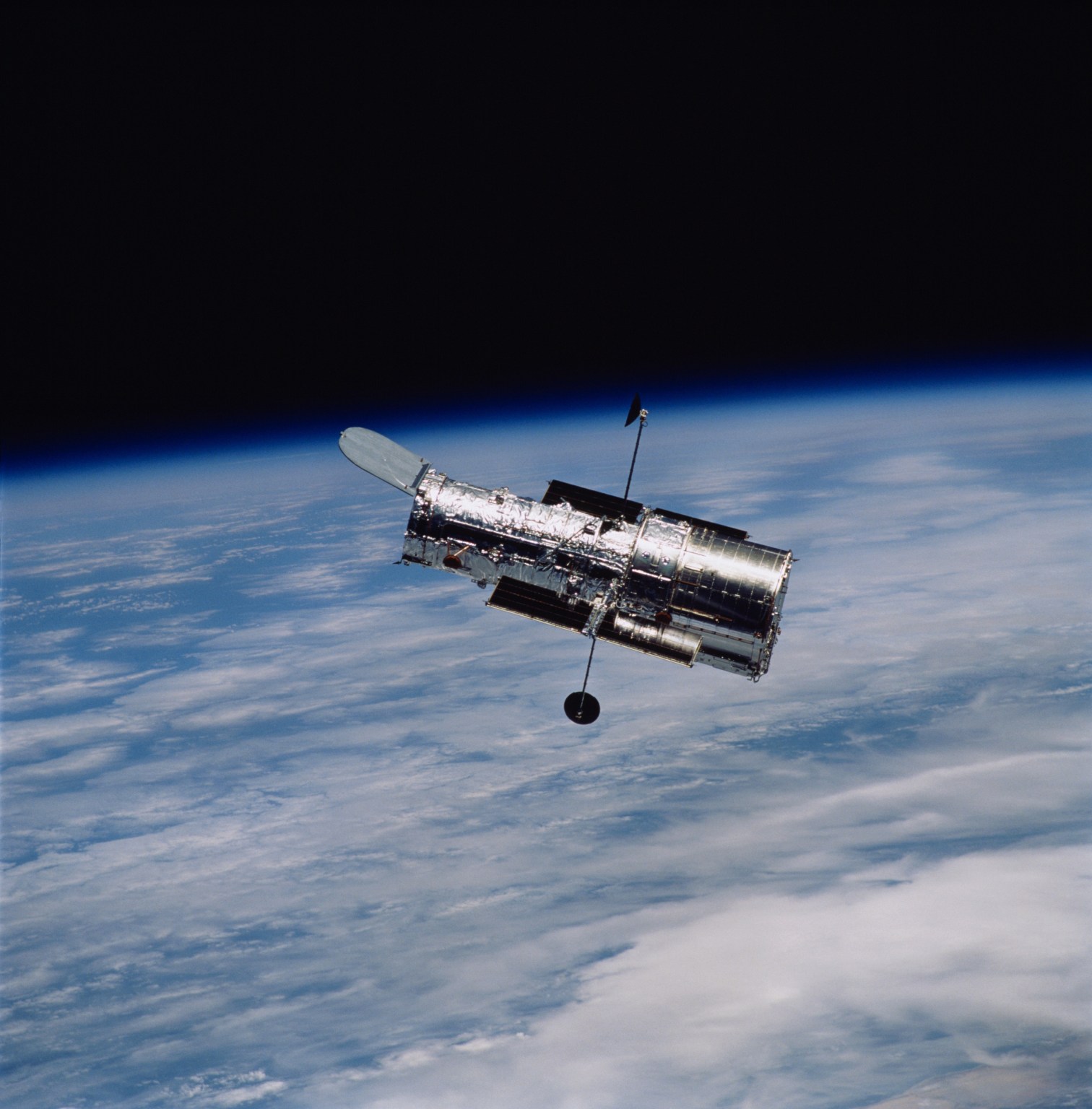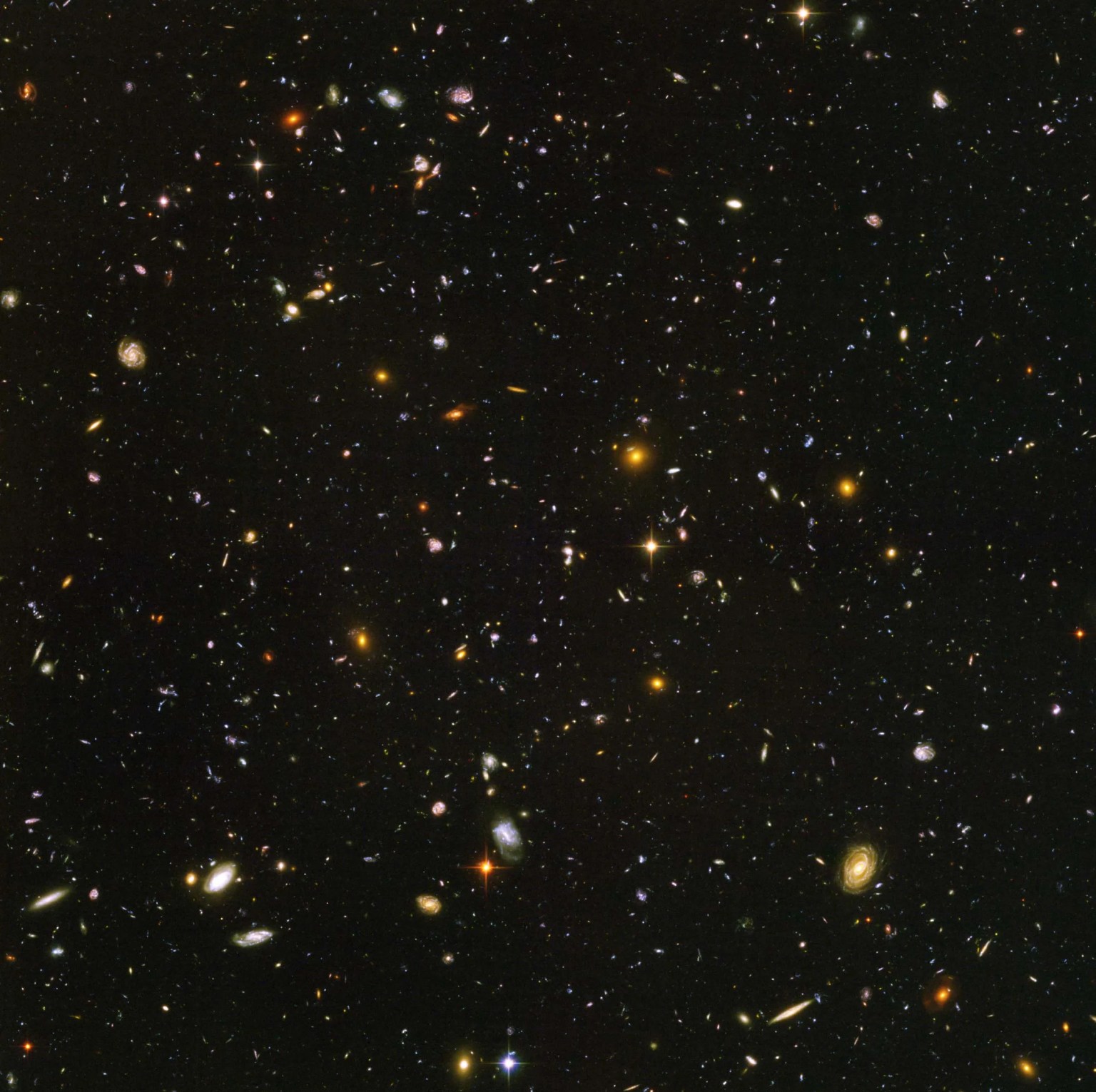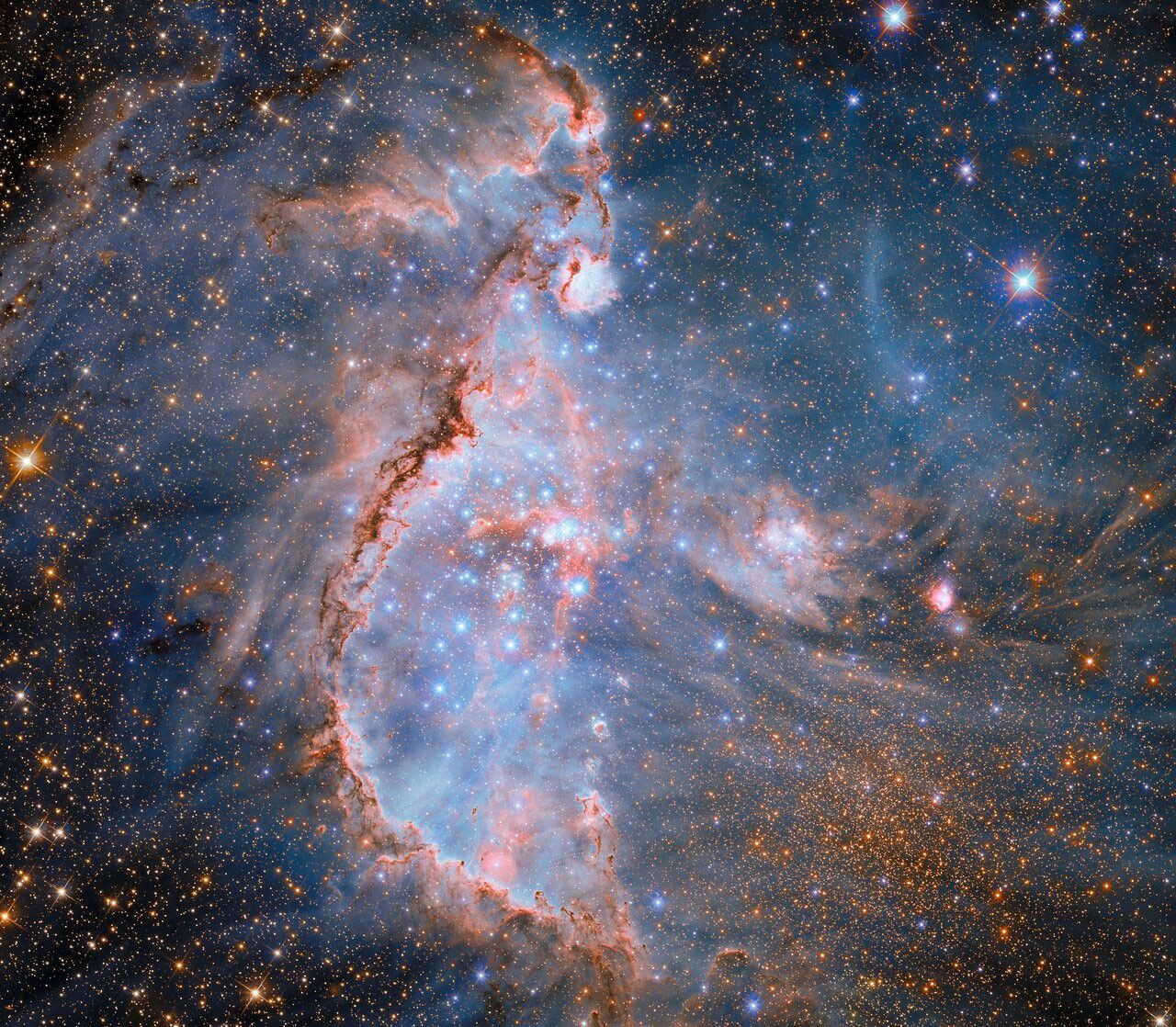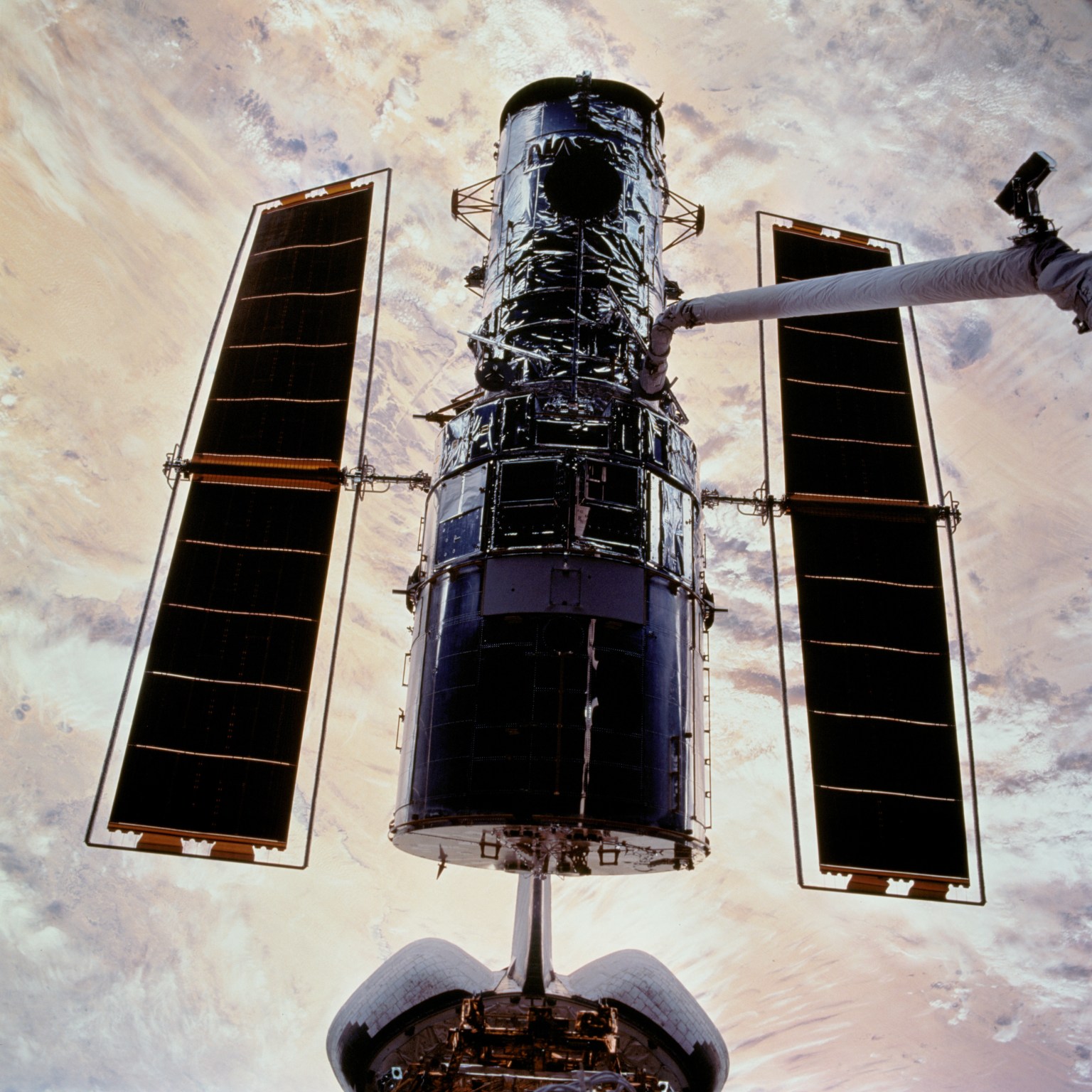Hubble Surveys Supernova-Rich Spiral
- Hubble Space Telescope has released a stunning image of the spiral galaxy NGC 1309, showcasing its intricate details and hundreds of distant background galaxies.
- The galaxy is notable for hosting two supernovae: SN 2002fk, a Type Ia supernova, and SN 2012Z, a Type Iax supernova that defied expectations by leaving behind a “zombie star” that shone brighter than before the explosion.
- Hubble observations have provided valuable insights into the behavior of white dwarf stars and their role in producing unusual supernovae explosions.
- The Hubble Space Telescope has been surveying NGC 1309 since its launch in 1990, with previous images released in 2006 and 2014, highlighting the telescope’s continued contributions to our understanding of the universe.
- As part of its ongoing mission, Hubble continues to explore the mysteries of galaxies like NGC 1309, shedding light on the growth and evolution of these cosmic structures.
2 min read
Hubble Surveys Supernova-Rich Spiral
Rich with detail, the spiral galaxy NGC 1309 shines in this NASA/ESA Hubble Space Telescope image. NGC 1309 is about 100 million light-years away in the constellation Eridanus.
This stunning Hubble image encompasses NGC 1309’s bluish stars, dark brown gas clouds, and pearly-white core, as well as hundreds of distant background galaxies. Nearly every smudge, streak, and blob of light in this image is an individual galaxy, some shining through less dense regions of NGC 1309 itself. The only exception to this extragalactic ensemble is a star near the top of the frame identified by its diffraction spikes. The star is positively neighborly at just a few thousand light-years away in the Milky Way galaxy.
Hubble turned its attention toward NGC 1309 several times; previous Hubble images of this galaxy were released in 2006 and 2014. Much of NGC 1309’s scientific interest derives from two supernovae, SN 2002fk in 2002 and SN 2012Z in 2012. SN 2002fk was a perfect example of a Type Ia supernova, which happens when the stripped-down core of a dead star (a white dwarf) explodes.
SN 2012Z, on the other hand, was a bit of a renegade. It was classified as a Type Iax supernova: while its spectrum resembled that of a Type Ia supernova, the explosion wasn’t as bright as expected. Hubble observations showed that in this case, the supernova did not destroy the white dwarf completely, leaving behind a ‘zombie star’ that shone even brighter than it did before the explosion. Hubble observations of NGC 1309 taken across several years also made this the first time astronomers spotted a star system that later produced an unusual supernova explosion of a white dwarf.
Text Credit: ESA/Hubble
Media Contact:
Claire Andreoli (claire.andreoli@nasa.gov)
NASA’s Goddard Space Flight Center, Greenbelt, MD

